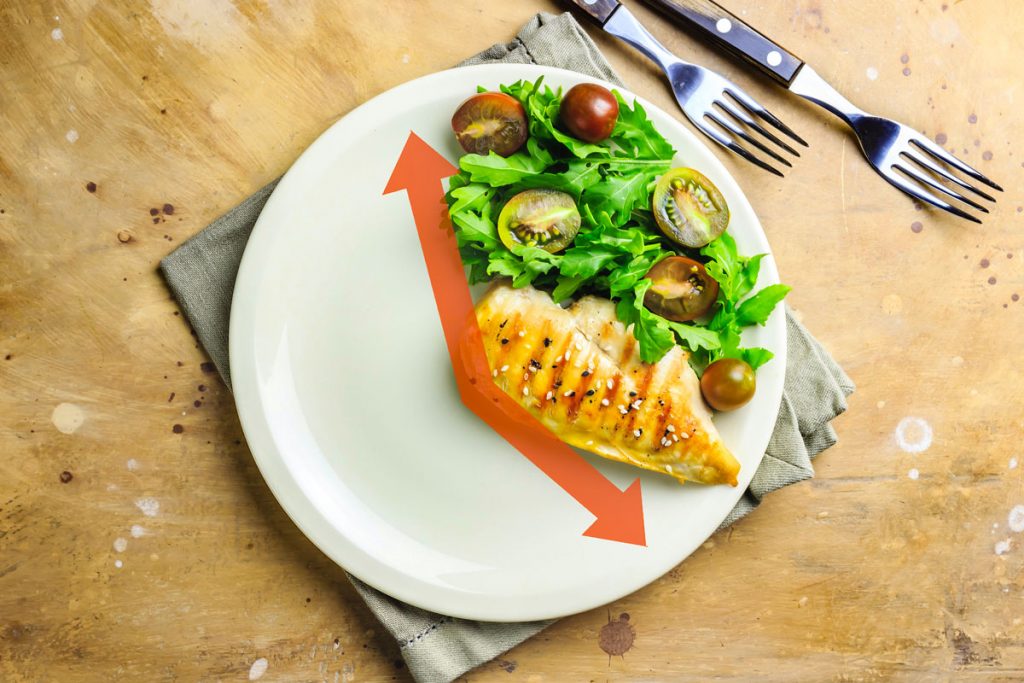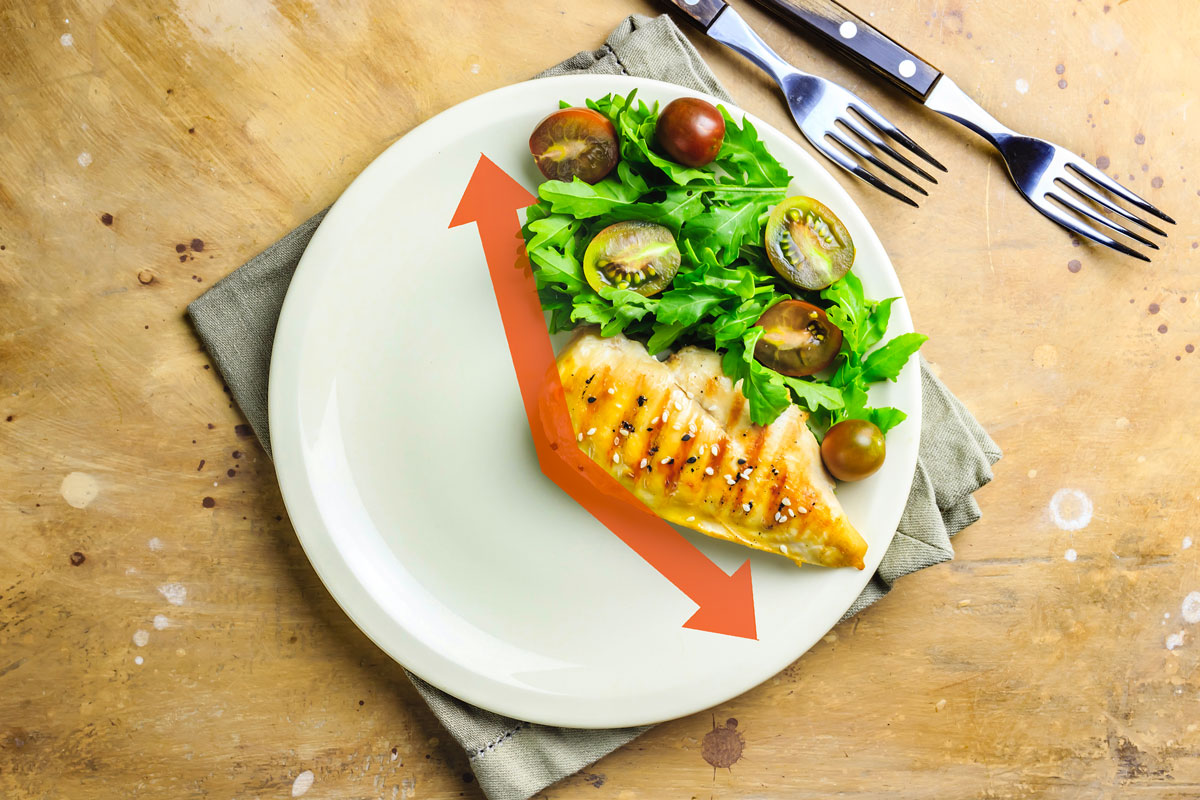
Photo / Adobe Stock
With all the different types of weight-loss strategies available, it can be difficult to choose what the best method is, and what’s right for you.
What is Intermittent Fasting
One recently popular way to lose weight is through intermittent fasting, which is an eating pattern where a person will regularly alternate between time periods of fasting and eating. One main distinction that sets fasting methods apart from other weight-loss programs, is the fact that the focus is concentrated more on when you eat, rather than what you eat.
Having a specific time frame or window when you eat, and when you fast, allows the body a break from eating, since eating requires energy from your body to breakdown your foods, ect. Fasting is one way to retrain your body to learn to recognize when you are actually hungry and not just artificially satisfying your appetite. This is key for people that eat every two hours or enjoy frequent snacks.
The reduction in calorie intake (as a result of eating fewer meals) should result in weight loss, however it’s recommended not to compensate by indulging in more food than you regularly would eat after the fasting periods. Overeating would defeat the purpose and most likely not yield the desired effects of shedding any pounds.
There are different ways in which you can fast, below we highlight the three most common methods: the 16:8 regimen, the 5:2 plan, and the alternate day fasting diet.
Time-Restricted Fasting
There are different names (16/8, the 16 hour fast or Leangains protocol) but the method, regardless of the moniker, involves restricting your daily eating to an eight hour period, then fasting for sixteen hours between (i.e. 16 hours of no eating then 8 hours to eat). For example, “fasting” from 8PM until noon would be followed by an eating period from noon until 8PM.
In the journal Nutrition and Healthy Aging, a study on obese adults during a 12 week period found that an 16/8 hour time-restriction in eating patterns resulted in an intake of fewer calories, some weight loss, and lowered blood pressure scores.
The “Fast Diet”
This method involves eating low calories for two out of seven days and then eating a normal calorie intake for the other five days (also known as the 5:2 plan). Various sources indicate that the daily calorie intake, on the low calorie days, should be typically in the 500-600 calorie range. This method is found to be the easiest and sustainable since it is not really fasting, but instead just limiting your calorie intake for two days out of the week.
With this plan, there is no specific time frame within your “fast” day (“fasting” for this plan doesn’t involve not eating, rather how much you can eat). The intake during your fasting days, which should always be non-consecutive, will require that you budget your calories wisely as they are limited to the range mentioned above.
Again, the focus isn’t on the types of food you eat, although, generally and according to common sense, the foods should be “normal” (as in, not junk food), for best results.
“Fast Diet” was popularized by journalist Michael Mosley who authored a book of the same title.
Is it possible to eat normally, five days a week, and become slimmer and healthier as a result? Simple answer: yes. You just limit your calorie intake for two nonconsecutive days each week–500 calories for women, 600 for men. You’ll lose weight quickly and effortlessly with the FastDiet. Scientific trials of intermittent fasters have shown that it will not only help the pounds fly off, but also reduce your risk of a range of diseases from diabetes to cardiovascular disease and even cancer. “The scientific evidence is strong that intermittent fasting can improve health,” says Dr. Mark Mattson, Chief of the Laboratory of Neurosciences, National Institute on Aging, and Professor of Neuroscience, Johns Hopkins University. This book brings together the results of new, groundbreaking research to create a dietary program that can be incorporated into your busy daily life. Also Available on Amazon
Alternate Day Fasting / Eat-Stop-Eat
This approach alternates the fast days and normal days throughout the whole week. With the fast days following the same limited caloric intake as in the “Fast Diet”, approximately 500-600 calories per day. During the normal days, a person can eat whatever they want, which is the greatest benefit in trying this diet since there isn’t sustained feeling of deprivation from the foods that you love to eat.
Since the outcome of this “every-other-day” fasting routine is to do a partial fast (reduced calorie intake not a complete liquid-only diet) either three or four of the seven days, it has the effect of reducing the weekly calorie intake slightly more than the “Fast Diet”.
Dr. Krista Varady has been researching intermittent fasting for over ten years and has written the widely popular title on the subject, “The Every Other Day Diet”.
That’s the satisfied declaration of a dieter who lost 41 pounds on the Every-Other-Day Diet. (And kept it off ) You too can expect dramatic results with this revolutionary approach to weight loss that is incredibly simple, easy, and effective. Created by Dr. Krista Varady, an associate professor of nutrition at the University of Illinois, the Every-Other-Day Diet will change the way you think of dieting forever. Among its many benefits:
It’s science-tested, science-proven. Dr. Varady has conducted many scientific studies on the Every-Other-Day Diet, involving hundreds of people, with consistently positive results published in top medical journals such as the American Journal of Clinical Nutrition and Obesity. Unlike most other diets, the Every-Other-Day Diet is proven to work. Also Available on Amazon.
Tips to keep it up
Feeling hungry will most likely be inevitable, and is the main side effect when fasting. These feelings are usually temporary as your body needs to adjust to new eating schedule.
Eating high fiber and / or high protein foods, such as fruits, vegetables, meats, nuts, beans and even high fiber chewable supplements, can ease the feelings of hunger during fasting. Drinking lots of water is another helpful tip.
Black coffee and tea can help with low energy, focus and concentration with the added perk that both have no calories.
** It is important to consult your doctor prior to any diet, especially for pregnant women or people that have diabetes, weight issues, and/or any other medical conditions that makes fasting inadvisable. **
Find books on Big Tech, Sustainable Energy, Economics and many other topics at our sister site: Cherrybooks on Bookshop.org
Enjoy Lynxotic at Apple News on your iPhone, iPad or Mac and subscribe to our newsletter.
